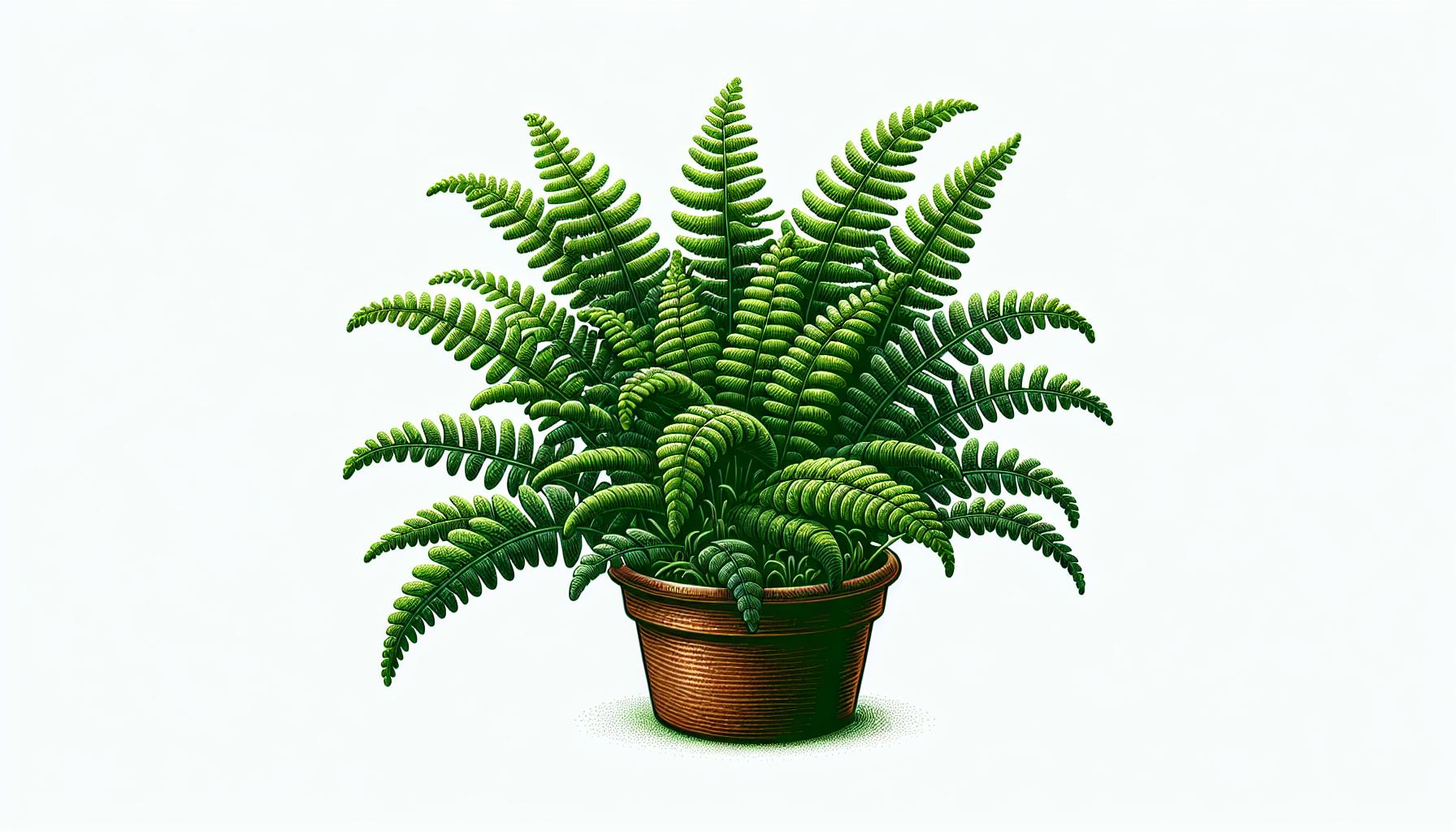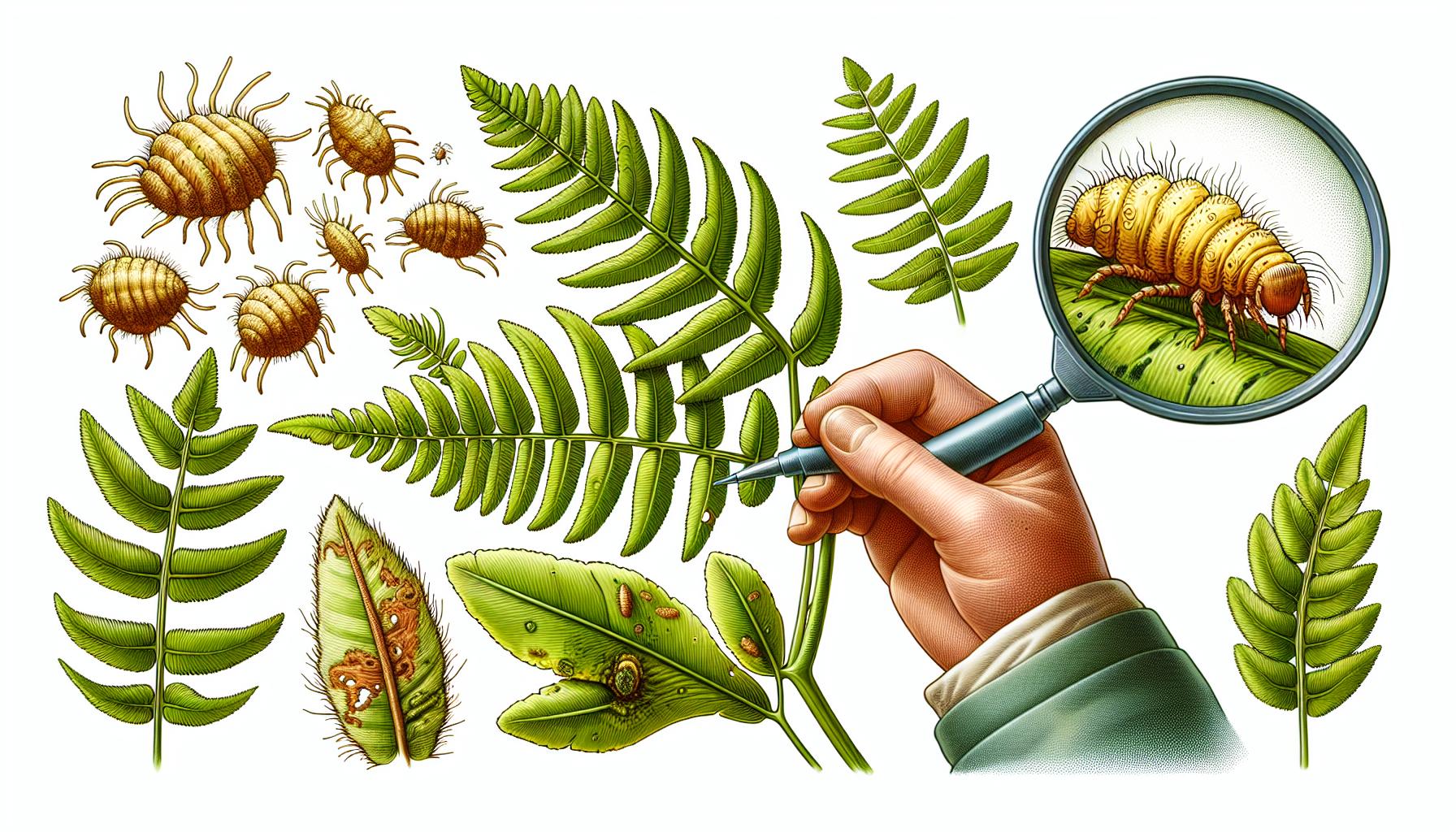
Ever noticed your once-lush ferns starting to sport yellow leaves? It’s a common issue that can leave you puzzled and concerned about your green friend’s health. Understanding why your ferns are turning yellow is crucial to getting them back to their vibrant best.
Yellowing ferns can be a sign of distress, often triggered by a range of factors from watering habits to light conditions. Don’t worry, though; with a bit of know-how, you’ll be able to pinpoint the problem and give your ferns the TLC they need to thrive again.
Common Causes of Ferns Turning Yellow
Improper Watering Practices
One of the primary reasons your ferns are turning yellow could be due to your watering habits. Ferns require consistently moist soil, yet overwatering can lead to root rot, whereas underwatering causes the plant to dry out. Here’s what you need to keep in mind:
- Overwatering suffocates the roots, preventing them from absorbing essential minerals.
- Underwatering leads to a deficit of moisture, hindering necessary physiological processes.
Lack of Nutrients
Ferns, like any plant, need a range of nutrients to maintain their vibrant green colour. Yellowing leaves often point to a nutritional deficiency:
- Nitrogen is crucial for chlorophyll production; a lack can turn leaves yellow.
- Iron deficiencies, often indicated by yellowing with green veins, can also be a culprit.
Incorrect Lighting
While ferns thrive in lower light conditions, too little light can cause yellowing:
- Direct sunlight can scorch the leaves, whereas too little light can weaken the plant.
- Ensuring the right balance of light can prevent yellowing and encourage healthy growth.
Pests and Diseases
Your yellowing fern might also be signalling an infestation or disease:
- Common pests including spider mites and mealybugs drain the plant of its nutrients.
- Fungal diseases like root rot often result from soggy soil conditions.
Inappropriate Temperature and Humidity
Ferns are sensitive to dry air and extreme temperatures:
- The ideal temperature range for ferns is between 15-21°C.
- Humidity levels should be maintained—consider using a humidifier or misting your ferns regularly.
Monitoring these aspects of fern care will help you identify the cause behind the yellowing leaves. Adjusting your care routine to address these common issues can restore the lush, green appearance of your ferns.
Overwatering and Root Rot

When you’re looking after ferns, it’s easy to think they need lots of water. After all, they thrive in moist, shady environments. Yet, there’s a fine line between moist and waterlogged. Overwatering is a leading cause for your fern’s leaves turning yellow. Too much water suffocates the plants roots because they can’t access the air they need.
The symptoms of overwatering mimic those of drought. You’ll see yellowing leaves and wilted tips, but the soil will feel soggy. If you notice these signs, check the drainage of your plant pots. Ferns must have well-draining soil to prevent water from pooling at the roots. Once root rot sets in, it can be challenging to reverse.
Root rot happens when excess water encourages the growth of fungi harmful to the plant’s roots. As it takes hold, the roots turn brown or black and feel mushy. Affected ferns can’t absorb the necessary nutrients and water, causing the leaves to yellow and the plant to deteriorate.
Here’s what to do if you suspect overwatering:
- Stop watering immediately and let the soil dry out.
- If the pot has poor drainage, repot your fern into a vessel with adequate drainage holes.
- Trim away rot-damaged roots with sterile scissors, being careful not to harm healthy tissue.
Regular monitoring of the soil moisture can prevent overwatering woes. Using your finger, check the moisture level at least 1 inch below the surface. If it’s damp, hold off on watering. Your ferns will thank you with a flush of green, healthy fronds.
Insufficient Light

While addressing the issue of overwatering, it’s also crucial to consider the impact of lighting on your ferns. Proper lighting is essential for the health and vibrancy of these plants. It’s important to realise that ferns naturally thrive in dappled shade, such as the light found on the forest floor. When grown indoors, they require bright, indirect sunlight to mimic these conditions.
If your ferns are not getting enough light, the leaves may turn yellow as a signal of distress. Unlike overwatered ferns where the soil feels soggy, ferns suffering from insufficient light will have dry topsoil and a general lack of growth.
To remedy this, find a location in your home that offers indirect light for the majority of the day. East or north-facing windows are often ideal spots. Furthermore, if the natural light in your home is limited, consider using grow lights specifically designed for indoor plants.
Regularly rotating your ferns every few weeks can ensure that all sides receive equal exposure to light, preventing the thinning of foliage on the side that receives less light. This will also encourage your ferns to grow more symmetrically and maintain a lush appearance.
Monitoring your ferns for signs of insufficient light and adjusting their position as necessary can make a significant difference in their health. Watch for signs of improvement, such as a return to a vibrant green color and fresh new fronds.
Nutrient Deficiency

When your ferns begin to show signs of yellowing, it’s crucial to consider nutrient deficiency as a possible cause. Plants, much like any living organism, require a balance of nutrients to maintain health and vibrant leaf coloration. A lack of essential nutrients can manifest in the yellowing of fronds, indicating it’s time to assess and adjust your fertilization routine.
Iron is a key nutrient that ferns need to produce chlorophyll, the green pigment responsible for photosynthesis. When iron is deficient, new leaves may emerge yellow while older leaves maintain their green color. Similarly, a deficiency in Nitrogen, a critical component for growth and green leafy structure, can result in a pale yellow appearance on older leaves as the plant reallocates nitrogen to new growth.
To tackle a nutrient deficiency, you can:
- Apply a balanced, Water-Soluble Fertilizer formulated for ferns, ensuring it includes micronutrients such as iron and magnesium.
- Use Foliar Feeding as a means to provide nutrients directly to the leaves where they can be readily absorbed.
Remember to follow the manufacturer’s guidelines for dosage and frequency to avoid overfertilization, which can harm your ferns as much as underfeeding. Regularly assessing the foliage and adjusting your care routine plays a central role in keeping your ferns healthy and avoiding the disappointment of yellowing leaves. Keep an eye on the color and vibrancy of new fronds, which can offer insight into the effectiveness of your adjustments.
Pests and Diseases

Ferns, like any other plant, are susceptible to a variety of pests and diseases that can cause their leaves to turn yellow. Recognising these issues early is key to preserving the health of your ferns.
Common Pests
Several pests are known to attack ferns, draining the plants of their vital juices and causing noticeable distress:
- Spider Mites: Tiny and often unnoticed until plant damage appears, spider mites spin fine webs on the undersides of fronds.
- Mealybugs: With a cotton-like appearance, these pests tend to cluster in leaf axils and emit a sticky substance known as honeydew.
- Aphids: These small, sap-sucking insects can cause fern leaves to yellow and curl.
Recognising Disease
Diseases may also be at fault for yellowing ferns:
- Fungal Infections: Soggy soil conditions can foster fungal diseases like leaf spot, which presents as discoloured, yellow patches on the fronds.
- Bacterial Infections: These can cause water-soaked spots, wilting, and yellowing leaves often accompanied by a foul smell.
- Isolate Affected Plants: Prevent the spread of pests and disease by isolating any affected ferns.
- Increase Air Circulation: Good airflow helps deter pests and reduce fungal pathogen development.
- Use Neem Oil or Insecticidal Soap: Both can effectively control pest populations when applied correctly to the affected areas.
- Remove Infected Parts: Trim away any yellow, damaged fronds to prevent the spread of disease.
Maintaining cleanliness around your ferns and monitoring for pests and disease leads to healthier, more resilient plants. Regular inspection of your ferns is necessary to catch problems before they escalate—check both the top and bottom of the fronds, and don’t forget to examine the soil. Keep your gardening tools clean and sterilise them if you’ve dealt with infected plants to avoid spreading pathogens further.
How to Revive Yellowing Ferns

If you’ve noticed your ferns turning yellow, don’t worry – there’s still a chance to bring them back to their lush, green glory. Addressing the underlying causes is your first step towards revival.
Adjust Watering Practices
Often, overwatering is at the root of the problem. Check the soil’s moisture; if it’s soggy, give the plant a break from water. Wait until the top inch of soil is dry before watering again. This simple change can significantly impact your fern’s health.
Enriching the Soil
A nutrient imbalance can also cause yellowing. Fertilize your ferns sparingly, about once a month, with a balanced, water-soluble fertilizer. Too much can harm your plants, so follow the package directions carefully.
Improve Lighting Conditions
Ferns thrive in indirect light. If your plant is in a too-dark corner or a too-bright spot, moving it can help. Ideal lighting encourages photosynthesis without scorching the delicate fronds.
Pest Management
In case of pests, like spider mites or aphids, act quickly. Wipe down leaves with a mild solution of soap and water or use neem oil for an organic approach. Ensure to treat all plants affected to stop the infestation from spreading.
Trimming Damaged Fronds
Pruning is crucial. Remove yellow and brown fronds to redirect energy to healthier parts of the plant. Use clean, sharp scissors, and cut close to the base without damaging the main stem.
Maintaining a consistent care routine after addressing these issues is essential for your ferns. Monitor their recovery and continue adjusting care as necessary, keeping a close eye on the specific needs of your plants for robust growth.
Conclusion
You’ve now got the tools to tackle yellowing ferns head-on. By adjusting your watering habits and ensuring your ferns bask in just the right amount of light, you’re setting the stage for a lush, green comeback. Remember to enrich the soil periodically and stay vigilant against pesky invaders that could harm your plants. Regular trims will keep your ferns looking their best. Keep a close eye on your green friends as they recover; with your newfound knowledge and a bit of patience, you’ll enjoy the vibrant presence of healthy ferns in no time.
Colin Macmillan is a seasoned entrepreneur and the CEO of Riverwood Landscape, a leading landscaping company based in Canada. He has been at the helm of the company since leaving high school, demonstrating his strong leadership skills and business acumen.
Colin’s expertise lies in various aspects of landscaping, including lawn care, interlocking, sod installation, and commercial maintenance. His hands-on approach and dedication to the craft have been instrumental in building Riverwood Landscape into a reputable brand.
One of his most notable achievements is the creation of a successful landscape franchise that services multiple locations. This accomplishment underscores his strategic thinking and ability to scale operations effectively.
Colin has also had the privilege of working with Guelph Hospital for landscaping and maintenance, a testament to the trust and reliability that his company has earned over the years.
His professional mission is to offer the best services and experiences for customers, a goal that he tirelessly pursues. Colin’s commitment to excellence and customer satisfaction continues to drive the growth and success of Riverwood Landscape.








